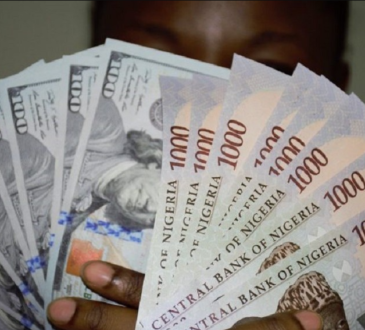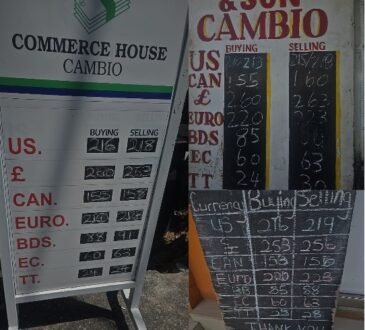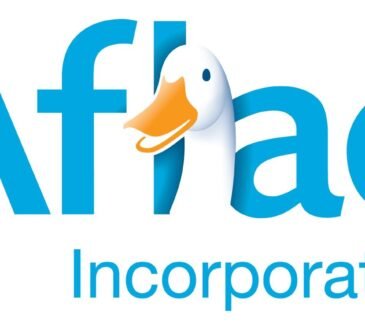
Foreign exchange rates might seem like a topic for Wall Street, but in Singapore, they’re closer to home than you’d expect. The strength of the Singapore Dollar (SGD) directly impacts the cost of your everyday purchases.
When the SGD is strong, imported goods become cheaper, helping to keep inflation in check. On the flip side, a weaker SGD can drive up prices, affecting everything from groceries to gadgets. Even if you’re not trading currencies, their fluctuations are quietly influencing your spending power every time you shop.
Given that Singapore’s economy relies heavily on international trade—over 300% of its GDP—any shift in currency rates sends ripples across the entire economy. Whether you’re investing, travelling, or shopping online, knowing how these rates work is key to making informed consumer decisions in our connected economy.
Understanding Foreign Exchange Rates: 2024 Guide for Singaporeans
1. What are Foreign Exchange Rates?
Understanding foreign exchange rates is simpler than it seems—it’s all about comparing the value of one currency to another. Essentially, the exchange rate shows how much of one currency you can get for a unit of another.
The foreign exchange (FX) global marketplace operates over-the-counter (OTC)—currencies are traded directly between participants, like banks, governments, and multinational corporations, without the need for a central exchange.
This makes the FX market a 24/7 operation, constantly shifting through global financial centres and time zones. With the speed of trades and transaction volume that reached US$87 billion, FX rates can change in an instant, driven by various factors at any given moment.
2. What Influences Foreign Exchange Rates?
Foreign exchange rates don’t just move around by chance—they’re driven by supply and demand. If more people want a particular currency, its value goes up. Conversely, if there’s less demand, the value drops. Furthermore, rates can be swayed by economic data, geopolitical events, and central bank policy shifts. These factors make FX rates and markets unpredictable.
For example, the Singapore Dollar (SGD) recently surged to its strongest level in nearly a decade, reaching 1.3019 against the US dollar. This spike was driven by several factors. First, the Monetary Authority of Singapore (MAS) maintained a strong policy to keep the SGD strong and combat inflation.
At the same time, the US Federal Reserve signalled possible interest rate cuts, weakening the US dollar. Additionally, Singapore’s upgraded economic growth forecast from 1-3% to 2-3% in 2024 further supported the SGD’s rise.
Trade between countries also plays a key role. When a country sells more goods abroad than it buys, demand for its currency increases because foreign buyers need that currency to pay. As this demand goes up, the value of the currency usually rises too.
3. Which Currencies Should You Know?
In foreign exchange, every currency is tagged with a 3-letter code set by the International Organisation for Standardisation (ISO). These codes are essential for identifying currencies in the FX market.
Here’s a quick look at the 8 most traded currencies and their codes:
|
Currency |
Code |
|
Euro |
EUR |
|
British Pound |
GBP |
|
Australian Dollar |
AUD |
|
New Zealand Dollar |
NZD |
|
U.S. Dollar |
USD |
|
Canadian Dollar |
CAD |
|
Swiss Franc |
CHF |
|
Japanese Yen |
JPY |
Now, let’s take a look at the currency codes for Southeast Asian countries:
|
Currency |
Code |
|
Thai Baht |
THB |
|
Malaysian Ringgit |
MYR |
|
Indonesian Rupiah |
IDR |
|
Philippine Peso |
PHP |
|
Brunei Darussalam |
BND |
|
Myanmar |
MMK |
|
Laos |
LAK |
|
Cambodia |
KHR |
4. Where Should You Exchange Foreign Currency in Singapore?
When it comes to exchanging foreign currency in Singapore, you’ve got a few solid options. Each has its pros and cons.
1. Money Changers
Despite the digital payment and banking age, cash still has its place. Whether it’s for visa-on-arrival, airport taxes, or snagging deals at a local market, having cash on hand can be handy. Authorised money changers are often your best bet for getting a good exchange rate.
Pros: Money changers usually offer the best rates without charging service fees. It’s a straightforward option—just know the “sell rate” (when you’re buying foreign currency) and the “buy rate” (when you’re selling it back). Popular spots like The Arcade at Raffles Place, People’s Park Complex, and Mustafa Centre are known for their competitive rates.
Cons: Comparing the best rate among moneychangers can be time-consuming. Carrying large wads of cash isn’t the safest either. Unless you’re exchanging a significant amount, the savings might not justify the effort.
2. Overseas ATMs
Withdrawing foreign currency directly from ATMs abroad is convenient, as long as your debit or credit card is linked to networks like PLUS (Visa), Cirrus, or Maestro (Mastercard).
Pros: Some banks waive transaction fees for specific ATMs, making it a cost-effective option. ATMs are easy to find in high-traffic areas such as airport’s terminals, hawker centres, and shopping malls. You won’t have to worry about running out of cash while travelling.
Cons: Many banks charge a flat fee or a percentage of the withdrawal amount. Below are the withdrawal fees for four top banks in Singapore. It’s important to be aware of these charges before making any transactions:
|
Bank |
Withdrawal Charges |
|
|
|
|
|
|
3. Multi-Currency Accounts (MCAs)
As cashless payments become the norm, Multi-Currency Accounts (MCAs) have emerged as a smart way to manage multiple currencies with ease.
Traditional Banks’ Multi-Currency Accounts
When it comes to traditional banks, MCAs are a solid choice for managing multiple currencies with ease. Banks like DBS, OCBC, and UOB offer accounts that let you hold several foreign currencies—perfect for travellers or anyone juggling with FX.
DBS My Account, for example, supports 12 major currencies and doesn’t require a minimum balance, making it super flexible. OCBC and UOB also offer MCAs with competitive rates and real-time exchange updates, ensuring you’re always in the know. If you prefer the stability and full-service experience of a traditional bank, these accounts have you covered.
Neobanks’ Multi-Currency Accounts


If you’re after something more modern, neobanks platforms like Wise, Revolut, and YouTrip are shaking things up. These digital-first options offer low fees and competitive rates, making them a hit with savvy users.
Wise lets you handle 40 currencies across 160 countries, giving you global reach without the hassle. YouTrip is perfect for travellers, offering fee-free transfers in over 150 currencies. And with Revolut, you can hold 30+ currencies and spend like a local in over 100 countries. These platforms are great if you want to manage your money on the go, with all the convenience of a smartphone app.
Pros: MCAs allow you to monitor exchange rates and buy currency when rates are favourable. They eliminate the need for carrying loose change. Unlike credit cards, they avoid extra costs for currency conversions.
Cons: Some MCAs require you to open a separate account with a minimum balance, which can tie up your funds. While MCAs are convenient, they do rely on merchants accepting card payments, so it’s still wise to keep some cash on hand just in case.
5. How to Get the Best Currency Exchange Rates in Singapore
Getting the best value for your currency exchange isn’t just about picking the right provider—it’s about knowing a few tips that can save your money. Here’s how you can maximise your currency conversion in Singapore:
Compare rates from multiple providers: Whether you’re using a money changer or an ATM, it’s crucial to shop around. Rates can vary significantly. Hence, you should check out different money changers, banks, or online platforms like Wise, or XE before making a decision. It’s always worth comparing to see who’s offering the best deal.
Avoid exchanging money at airports: Airports are convenient but come with a catch—higher exchange rates. At ChangiFX, if you exchange US$3,000, you might receive S$2,279, whereas the XE rate would give you S$2,293. You are paying up to S$14 for the convenience of picking up cash right at the airport, saving you a trip to an ATM or a local money exchange in the city.
Avoid exchanging on weekends: The rule of thumb is to skip currency exchanges on weekends. Rates tend to be less favourable because the FX market is closed, leading money changers to hike up their rates to cover costs. If you must exchange cash on a weekend, do so sparingly and be mindful of the fees.
Consider going cashless: Cashless transactions are on the rise in Singapore – evidently even the hawker centres accept QR payments. Money changers now offer currency exchange through credit and debit cards,and via mobile wallets. Just be sure to check the transaction fees, as they can add up quickly.
6. When Is the Best Time to Exchange Money?
Timing is everything. The foreign exchange market operates 24 hours a day, five days a week, but the best time to exchange your money is when the market is most active. This is when you’re likely to get the most favourable rates.
For instance, the SGD sees the most activity during the Asian trading session, from 9 am to 5 pm SGT. If you’re planning to exchange your currency to SGD, aiming for this window can be a smart move.
You can also gain an edge by looking at historical data, like this chart showing the USD/SGD exchange rate. Notice the fluctuation patterns—knowing when the Singapore Dollar (SGD) has been strong against the US Dollar can help you choose the best time to exchange.
Checking past trends isn’t just for the experts. It’s a simple way to spot patterns and make more informed decisions about when to exchange your currency.
7. Should You Change Currency Before You Go or Wait Until You Arrive?
It may seem crucial, but the differences are minimal. Money changers everywhere maintain a margin to profit, so you’ll always lose a bit in the process. Plus, there’s the added risk of ending up with counterfeit notes when overseas.
If you want to be strategic, consider withdrawing cash from ATMs once you’re abroad. Bank-owned ATMs generally offer the most up-to-date exchange rates and lower fees compared to airport kiosks or currency exchange booths. Since they’re managed by banks, the likelihood of encountering counterfeit currency is only a sliver.
8. Should You Change Money at the Airport or Money Changer?
Knowing that you need cash immediately, it’s much more cost-effective to exchange at a bank or use an ATM. While banks and ATMs do charge fees, these fees are usually far lower than the steep mark-up you’re likely to face at the airport or money changer. If you want to keep more of your money, it’s wiser to head to a money changer or ATM instead.
9. Final Takeaway
Knowing FX rates isn’t just for professionals—it’s a key move for any traveller. With these tips, you’re set to make the most of your money, wherever you go. Don’t keep this to yourself—share it with your friends and colleagues, and help them travel smarter too!
Share this article with your family and friends!
About the author
Travelling the world and getting involved in cross-cultural works is Caleb’s passion. Freelance digital marketing and content writing is a way for him to express himself creatively while earning his keep. He unwinds by diving into a variety of music genres. Living in a digitally disrupted world, he’d like to offer a different perspective on finances to show people the possibilities of what goes beyond a typical “Singaporean life”.
Understanding Foreign Exchange Rates: 2024 Guide for Singaporeans was first published on the MoneySmart blog.
MoneySmart makes it easy to take control of your finances. Stay in the loop—follow us on Instagram, Telegram, and Facebook for the latest on personal finance.
Ready to find the best loans, insurance, or credit card offers in Singapore? Compare them on our site now.
© 2009-2024 MoneySmart. All rights reserved.





